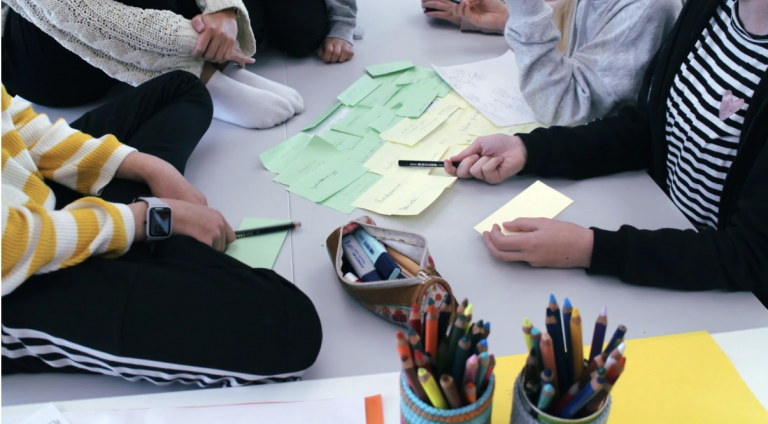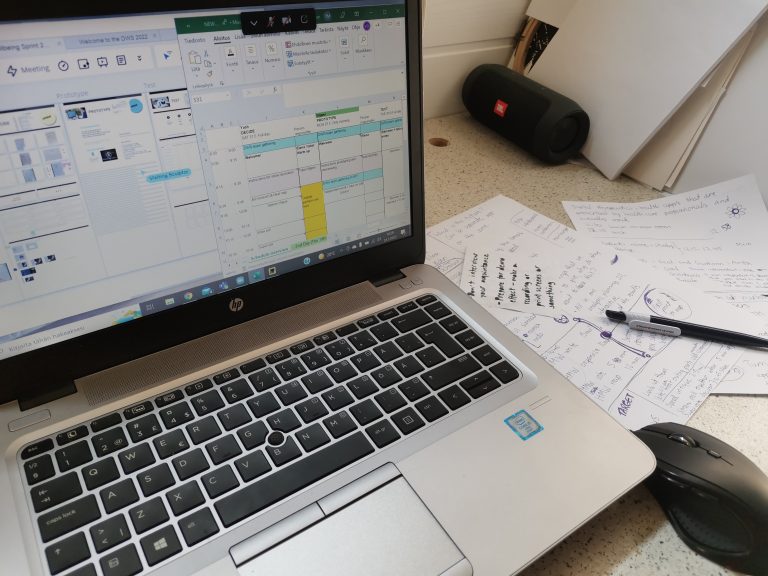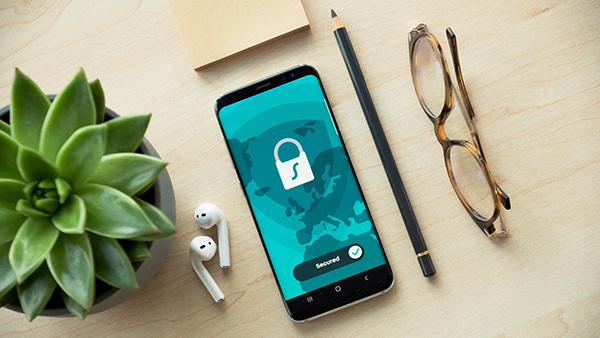Multiple remote Design Sprints – the agile way of solving challenges in times of pandemics (12 steps for designers)
Multiple remote Design Sprints – the agile way of solving challenges in times of pandemics (12 steps for designers)
Design Sprint Methodology was invented by Jake Knapp, John Zeratsky, and Braden Kowitz to solve challenges and test new ideas in companies in just a few days. When the first Sprint book was published in 2016, the authors were not sure if the methodology would work remotely. A few years later, the remote version of Sprint was created. It seems like an ideal solution in times of pandemics for companies that operate fully remotely, but does it really work? Does it work for multiple sprints happening simultaneously and teams of people who have just met?
Spoiler alert, we confirm Design Sprints can be done successfully remotely. What is more, it can be done on a large scale – you can successfully run 8 sprints simultaneously. In our case, it was 8 teams solving challenges provided by 6 companies from the health and wellbeing sector. Finally, design sprints, though designed for solving challenges by a team already familiar with the company and challenge, can also work for strangers new to the problem collaborating together.
To make it happen however, the process requires some modifications. Let me share some useful tips which may help you in organising your remote Design Sprint(s). I will try not to repeat key learnings and practices already listed by my colleague, Salla Kuuluvainen , which couldn’t have been better written and I highly recommend reading Key learnings from designing a remote multi sprint event. I will rather elaborate on some of them and add some more practical takeaways for those who consider organising multiple remote sprints.
12 steps worth considering while designing multiple remote design sprints:
1.Give more time
The original Sprint is 5 days long. There is also the modification by A&J Smart, approved by Sprint authors, which lasts 4 days only. If you run 8 sprints simultaneously, participants are new to the challenge, and team building is required, even 5 days are not enough. You need more time at the beginning of the Sprint. This is why we split the first day program into two. Finally, we also added a Pitch day when teams presented their solutions to companies.
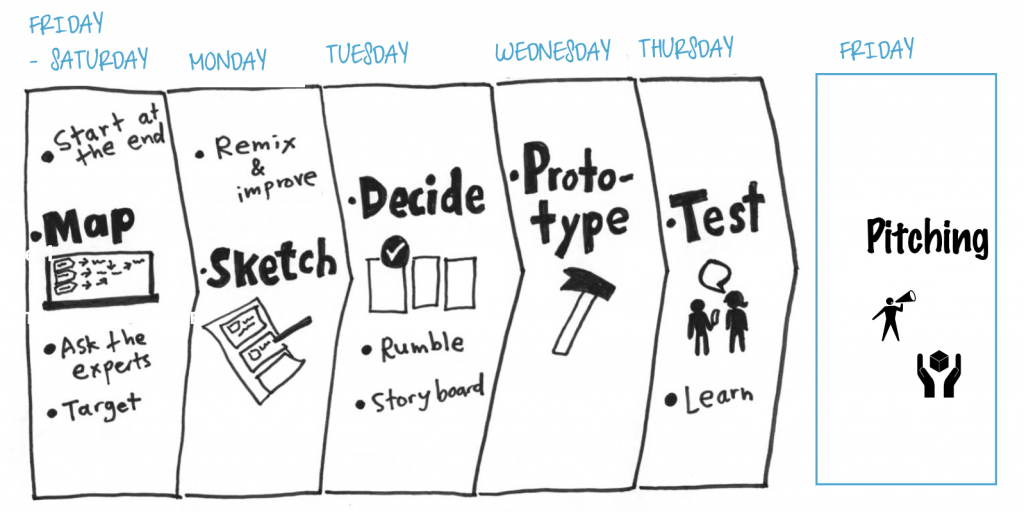
The original program of Sprint modified for the Digital Wellbeing Sprint needs. Original image from Mural Design Sprint template by Steph Cruchon (Design Sprint Ltd), Jake Knapp, John Zeratsky, and Jackie Colburn.
2. Have the right amount of remote design sprint team members.
It is said that the optimal amount of Design Sprint participants is up to 7 people. In terms of the online version of a Sprint, with team members who do not know each other and are unfamiliar with the company and the challenge, it is better to have teams of less than 7 members. We had a chance to observe the dynamic of 8 groups consisting of 4 to 6 participants and among them the most developed prototypes had groups consisting of 5 participants. It might have been due to each team’s challenge area of focus. Nevertheless, the online group dynamic is definitely different than offline. Particularly, if you need to include team building in the Sprint process, I would recommend having 5 members per team.
3. Have the right challenge – one per Sprint
The challenge at Design Sprint needs to be well-defined. Unlike other design processes, in the Google Design Sprint process there is no time to do research on the problem and empathise with users, so teams need to rely on company representative knowledge. This is why the company representative needs to be present, especially in the moments where the role of the Decider is crucial (defining a long-term goal and sprint questions, adjusting a map, picking a target, selecting a solution to prototype).
We noticed that teams who had company representatives involved throughout the process were able to produce results which were much more appreciated and valued by the companies. Not to mention that the companies also benefited from fruitful discussions and ideas which weren’t picked to prototype.
4. Ignite the additional power of innovation “stealing” and individual ideation
What I personally appreciate from The Design sprint methodology is the included time for finding inspiration, the so-called Lightning demo. When you look at all great innovation, you will notice that it is based on existing ideas. We equipped participants with an additional source of inspiration by providing keynote speakers from IBM, Sitra, Helsinki Business Hub or Proimpro.
Additionally, the Sprint authors understood the power of individual ideation instead of popular group brainstorming sessions. Group brainstorming sessions are proven to be less effective in terms of the amount and quality of ideas compared to individuals working alone according to research done by Yale University in 1958. This is why the Design Sprint authors introduced “brainwriting and drawing” (sketching) in their Sprint Methodology. Through this process you can be sure of the quality of ideas but you need some quantity as well.
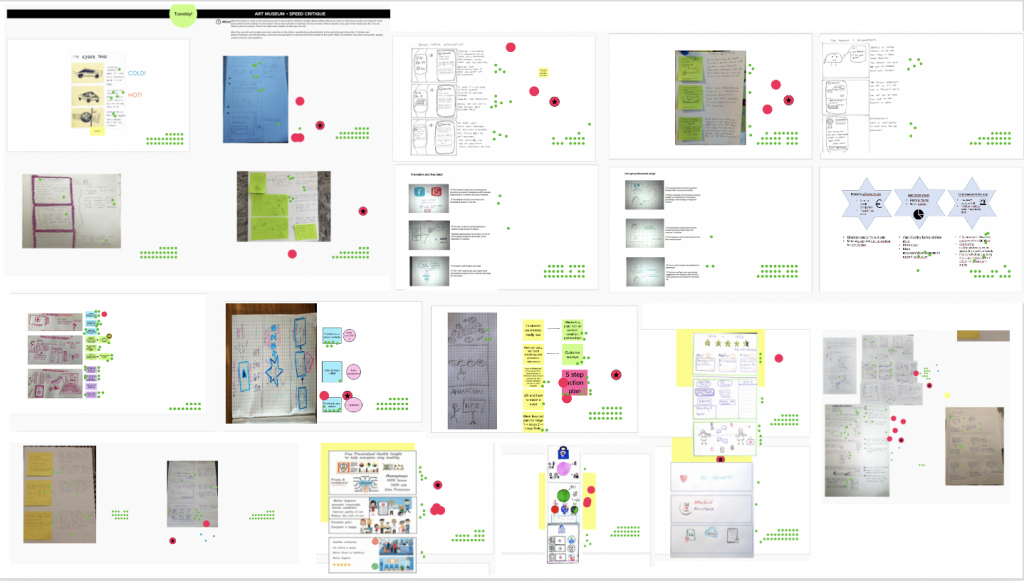
If you have less than seven team members, which is recommended in terms of online Sprints, you will have less inspiring examples in the Lightning Demo part. In addition, you will have less examples in ideation later unless you increase the requested number of ideas per person in the instructions. I would highly recommend you do it.
5. Instead of storyboards ask for user flows (if relevant)
Storyboards are usually associated with a comic story with heroes which is great for visualising an offline service or a customer journey. However, storyboards in the design sprint are a map and guideline for your prototype. If your prototype is supposed to be online e.g. a website or an app, which is more likely in the virtual sprint, it may be useful to simply call it a user flow from the user experience field. Otherwise it may be confusing.
6. Have a tangible prototype which can be tested online
One of the Sprint Days is entirely dedicated to prototyping. It seems too short, but it is enough to develop a working facade of your solution to test it with users. This amount of time prevents you from spending hours on polishing the wrong solution. Instead, you will have a low fidelity prototype which enables you to collect better feedback. People are more willing to share their real thoughts once you show them the functional draft instead of a high quality version. There is one more rule you need to follow when doing the Design Sprint online. You need to have this prototype adjusted to online testing. It needs to be understandable and interactive online and you need to take this into account while developing it.

7. The core of Sprint is testing with real users.
The first challenge to solve here is to find the right testers. It may be tricky especially if you don’t know who your users are. You can start recruiting during a Sprint once you specify your target. However, whenever possible I would recommend asking companies to engage in providing testers. They are the ones who know their clients best and they will be more willing to believe in results provided. It is proven that 4 testers allow you to have 85% of problems identified. However, having the 5th tester enables you to really spot those patterns (Nielsen et al., 1993).
For testing, you will need to use some online communication tool which enables a tester to share its screen and have the camera switched on at the same time for example: Zoom, Teams, Skype. It is better to use a different communication tool for testing than the one you use for the whole Sprint. A good practice for interview observers is to have the camera switched off in contrast to the interviewee and interviewer.
Other than above, the rules of interviewing are the same as offline.
8. Have one common tool for communication
We used Zoom and Mural as well as Onedrive and Moodle for communication with teams. Salla tackled it in her article. We also allowed teams to self-organise regarding their communication giving them a choice to use any tool including Basecamp, a tool recommended by the Design Sprint authors. No team picked Basecamp but it turned out that having one common place where tutors can add materials and where teams can share their results could be very helpful. Basecamp could easily replace Onedrive, Moodle and any other tool used for internal team material sharing and discussions. If I were to run 8 sprints once again, I would definitely use Basecamp for all Design Sprint communication, especially knowing how intuitive it is.

9. Use diverse online energisers
Using the chat feature is a great way to energise your Sprint participants, but don’t overuse it. The core of energisers is diversity and novelty for your participants. Use breakout rooms when it requires one-on-one or small team interactions. The order in which your neighbours appear on your Zoom screen is exactly the same as everyone else sees it, so you may easily invent some interactions based on this.
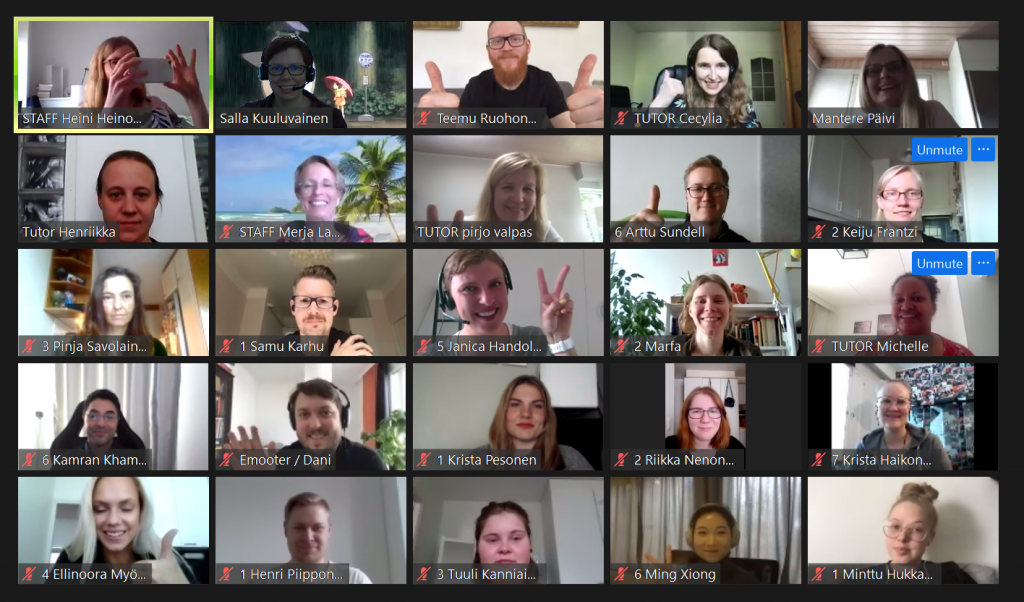
10. Tandem virtual facilitation work
It is always good to facilitate Sprints in a 2 person team as the second facilitator who is not giving instructions can easily spot group needs and be able to immediately jump in if any technological issue appears, for example, being on mute. The second facilitator can also follow the questions on chat and react to them while you are showing the Mural boards. This is why in the Digital Wellbeing Sprint tutors were divided into 2 person teams.
11.Overcoming a groan zone during the Design Sprint
If you don’t always have a Decider in the room, who helps at Design sprints to minimize the risk of experiencing a groan zone, you are more likely to encounter it. For those who do not have a clue what a groan zone is, it is a common moment in the design process where you feel overwhelmed and confused and are not sure how to proceed.
If this happens, make everyone speak and share their concerns and ideas for a solution and clarify the purpose. You can name it and say that it is typical. Aim to find a way for a team compromise. Have your cameras switched on whenever possible, so that others know that you are present and listening to them.
12. Have a backup plan
If it is an event for 40 people you need to be prepared for any emergency from technical problems such as a slow Sprint Mural board template, explained in Salla’s article, to anything else that may arise. Use your imagination by asking yourself “what if” questions and prepare for it in advance. The more you have rethought, the better your Sprints will be. The rest is having a great team to enjoy your Sprint roller coaster ride.
Last but not least – have fun with the right team
We had the right team to take and really enjoy these multiple remote design sprint roller coaster rides and I would like to thank Salla Kuuluvainen, Heini Heinonen, Michelle Sahal Estime, Hanna Lumenkoski, Henriikka Tikka, Pirjo Valpas and Teemu Ruohonen, Päivi Mantere and Merja Lahdenperä without whom this couldn’t be successful. I have learned a lot from this program co-designing and facilitation experience. Thank you!
If you are interested in how remote sprints work in comparison to offline sprints, we have some interesting data to share.
The Digital Wellbeing Sprint has been organised by 3AMK – Haaga-Helia, Laurea and Metropolia Universities of Applied Sciences for the first time fully remotely this year due to the pandemic. Only two out of 40 participants strongly thought that the offline environment is much more suitable for a Sprint. It is most probably related to the participant’s experience with Mural as a similar amount didn’t enjoy working on Mural due to its slowness. The Mural team promised to make some improvements in the near future, so this may no longer be an issue. Despite the issues with Mural, 7 groups delivered solutions which were highly appreciated by companies who claimed to implement them in the nearest future.
Stay tuned for upcoming events.
About the author:

Cecylia Kundera is a digital project leader and a service designer helping companies to design and deliver real value. She is especially fond of implementing a foresight approach and holistic mindset in design, because the Earth is not only for human beings.
Ready to get in touch with you if you have any questions.

